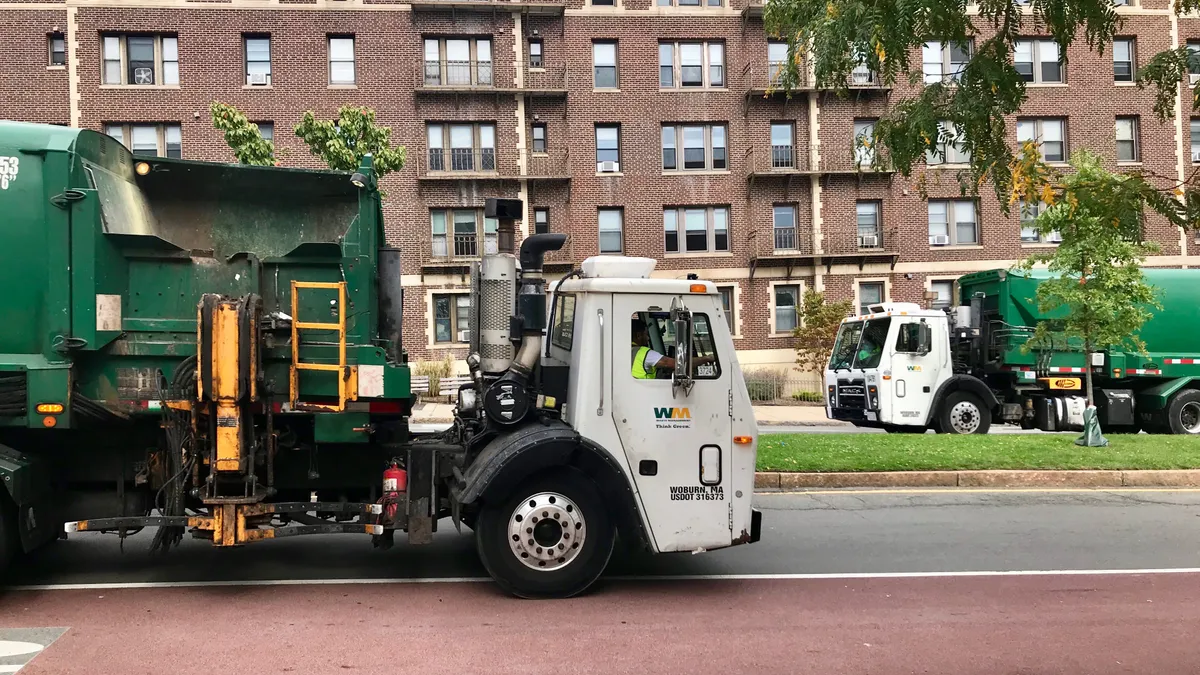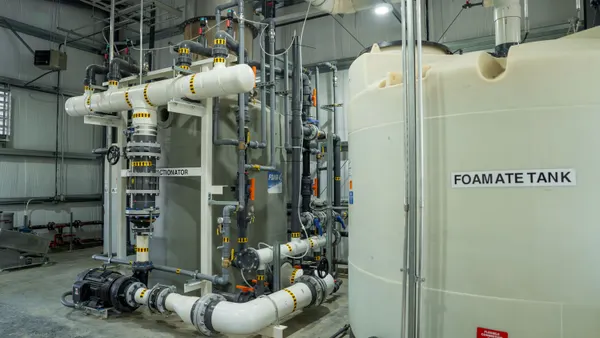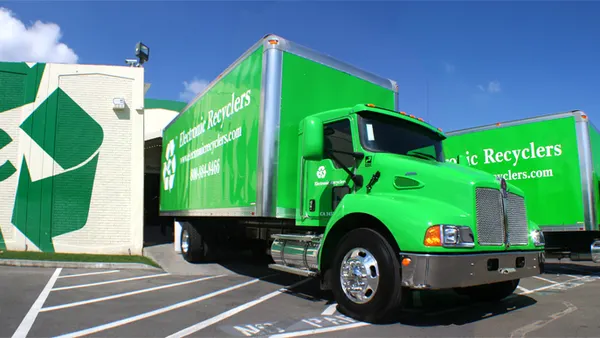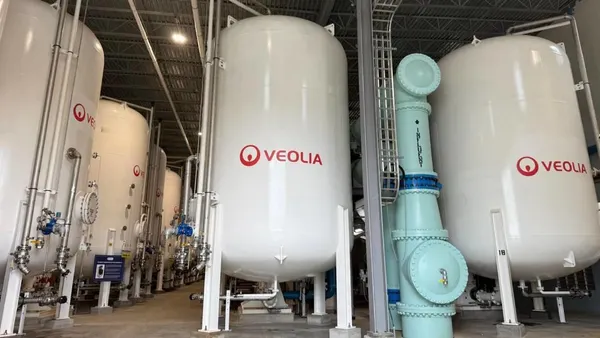WM has updated its sustainability strategy with a new set of targets, including a nearer-term GHG emissions reduction goal.
This adjustment reflects a landscape for environmental, social and governance strategies that’s evolved quickly in recent years, as major companies are increasingly expected to set more specific goals.
Climate targets
Goal: Reduce absolute Scope 1 and Scope 2 GHG emissions 42% by 2032
Baseline: 16.98M metrics tons of CO2 equivalent Scope 1 emissions and 182,885 Scope 2 emissions in 2021
WM previously set a target to “reduce, avoid and offset four times the emissions we generate in our operations by 2038,” which remains in place, but later announced a set of 2025 targets in an effort to show more near-term progress. Since WM first set its overall target, companies in the waste industry and other sectors have increasingly gravitated toward more direct emissions reduction targets. WM committed to setting a new goal in line with the Science Based Targets Initiative (something also done by competitor Republic Services), which calls for targets to align with the Paris Agreement’s 1.5 degree Celsius global warming limit.
Scope 1 emissions comprise the majority of WM’s overall greenhouse gas footprint, as is the case with all major waste companies that own landfills. WM’s Scope 1 emissions increased from 2020 to 2021 in both the landfill and fleet segments, driven primarily by its first full year of data after the Advanced Disposal Services acquisition. The carbon intensity per 1,000 miles driven for WM’s fleet increased in this period for similar reasons. At the same time, WM’s Scope 2 emissions decreased due to increasing renewable energy procurement.
WM points to $825 million in planned investments for renewable natural gas projects at its landfills as one way to shift this trend, which in turn can reduce its fleet emissions. The company now anticipates it could fuel its whole natural gas fleet with RNG by 2026. In the meantime, WM reports 57% of its fleet was running on compressed natural gas at the end of 2021, and 47% of its fleet fuel was “from a renewable source.”
Goal: Increase “recovery of materials” by 60% to 25M tons by 2030, with interim goal of a 25% increase by 2025
Baseline: 15.34M tons of materials managed in 2021
WM’s list of target materials for this goal, in order of 2021 tonnage, include paper, mixed organics, C&D/wood, fly ash from coal plants, glass, plastic, metal, e-waste/lamps and a miscellaneous category. According to the company, it has $800 million in investments planned for MRF infrastructure and related areas through 2025.
The company also reports a 10% increase in “plastics capture” since 2019, with LDPE its leading type of plastic recycled in 2021. WM recently announced plans to acquire Avangard Innovative, a LDPE recycler, in an effort to scale up commercial film processing. WM is also maintaining a goal to reduce inbound recycling contamination levels to 10% by 2025. As of 2021, the company reported a 16% contamination level.
Social targets
- Goal: Reduce Total Recordable Incident Rate by 3% annually, with a target of 2.0 incidents per 100 employees by 2030 and a “continued focus on prevention of serious injuries.” The company’s baseline in 2021 was a TRIR of 3.0, up slightly from 2020.
- Goal: Invest 2% of net income “to targeted social impact programs, positively impacting 10 million people in our communities by 2030.” WM’s 2021 net income was $1.816 billion. In 2021, the company reported $14.3 million in total charitable giving. The company’s original target was to “reach 1 million participants by 2038.” It reportedly reached 1.29 million people through 2021.
- Goal: “Increase overall representation of women to 25% by 2030” and “increase representation of racial/ethnic minority employees at manager and above to 30% by 2030.” Through the end of 2021, women comprised 19% of WM’s workforce and 24% of its managers were listed as ethnically diverse. WM had previously set general 2025 targets related to racial/ethnic diversity, as well as female representation.












